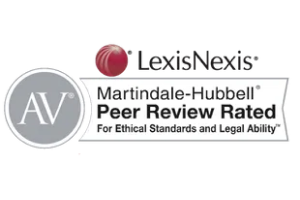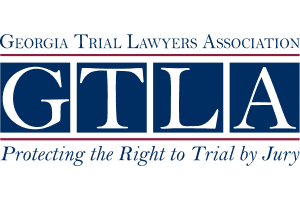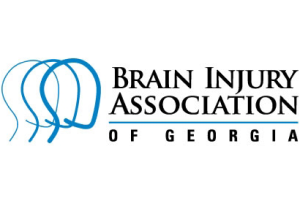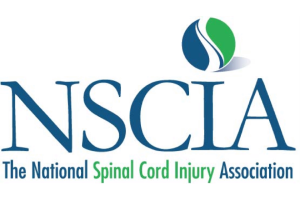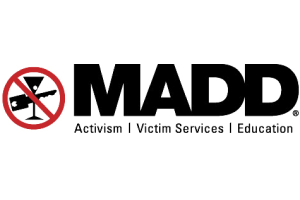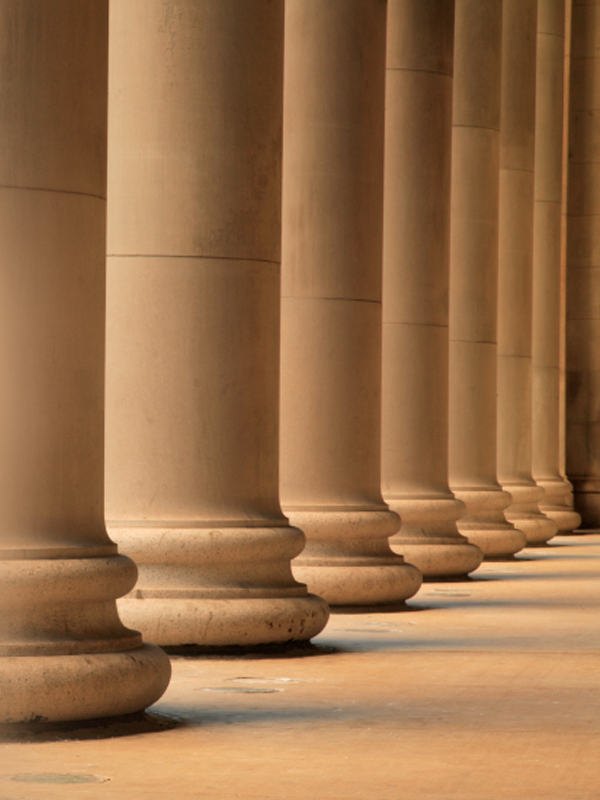What To Do and Not Do Following a Car Accident or Motorcycle Accident
Suggestions From a Georgia Lawyer About What To Do
and Not Do Following a Car Accident or Motorcycle Accident
We are Atlanta based personal injury attorneys with considerable experience handling automobile and motorcycle accident cases throughout Georgia. With this experience, we have developed these suggestions about what to do and not do if you or a family member is involved in a motor vehicle accident. We have addressed both steps to be taken at the scene of the crash, as well as during the days and weeks following the crash. In addition to an injured motorist or pedestrian, these suggestions apply to family members or other persons who come to the accident site or who provide assistance during the post-crash period. Many of the post-crash suggestions we have included should be handled by an attorney if one has been retained. Indeed, it would be better for an attorney to handle these matters which is why hiring a lawyer soon after the accident is advisable. However, victims and their families should know what can and should be done if a lawyer has not yet been hired.
In order to comply with Georgia law and to preserve and even enhance a victim’s potential civil law claims, the following steps can and should be taken at the scene of the car wreck and during the days and weeks following the accident.
1. Remain Calm, Assess Dangers, and Keep Yourself and Others Safe.
Once your vehicle has come to a stop, stay as calm as possible and immediately assess the situation. If anyone has sustained any injury, call 911 immediately and request assistance from emergency personnel. In the immediate aftermath of the crash, your first priority must be your safety and the safety of others in your vehicle or at the scene of the crash. Use good judgment to prevent the situation from getting worse. The crash scene may pose many dangers such as crashed vehicles being struck again by other vehicles traveling in the area of the accident. Indeed, secondary collisions are not uncommon and can often be more serious than the initial crash. For this reason, no person should ever stand between the two damaged vehicles because of the risk of being crushed by a secondary impact. Other post-crash hazards include vehicle fires and the collapse of structures damaged by striking vehicles.
Depending upon the circumstances, take reasonable measures to minimize the risk of further injury at the scene. Turn off the ignition to help prevent fire. If your vehicle cannot be safely moved out of the way of oncoming traffic, take steps to make it more conspicuous to other vehicles – turn on the hazard lights, raise the hood, and if warranted and possible, set out flares, cones or reflectors, etc. Occupants without serious injuries should exit the vehicle and cautiously move or be helped to a location safely away from the accident site. If children are present, they should be closely supervised to ensure that they are not struck by other vehicles or injured by crash-site debris. Anyone who remains in the damaged vehicle should keep on their seatbelts. Unless performed by an adequately trained medical professional, no attempt should be made to move persons with serious injuries. In fact, anyone with a potentially serious injury should be kept as immobile as possible. Efforts to move an injured person by untrained helpers can result in even more serious injuries and should be avoided unless life saving first aid measures are needed or leaving the injured person inside a damaged vehicle would pose an immediate danger. Thus, unless life threatening circumstances exist, the general rule is that removal of seriously injured individuals is best left to emergency response personnel.
2. Stop and Remain at the Scene.
Do not leave the scene of a traffic accident unless staying there poses a significant risk to your safety or welfare. Indeed, the duty to stop and render aid after an automobile accident is mandatory under Georgia statutory law. O.C.G.A. § 40-6-270 provides that the driver of any motor vehicle involved in an accident resulting in any damage to a vehicle or resulting in any injury to or death of another person must stop and remain at the scene. After stopping and remaining at the scene, this Georgia statute places a duty on each driver to do 4 things:
- give his or her name and address, and the registration number of the vehicle he or she was driving;
- if requested, exhibit his or her driver’s license to any of the occupants of the other vehicle;
- render to any injured person reasonable assistance including transporting or arranging for the transporting of the injured victim from the scene in order to obtain appropriate medical treatment; and
- make every reasonable effort to contact and request assistance from the police and emergency medical services in the event a victim appears to be dead, unconscious or unable to communicate.
Under Georgia law, it is a felony for a person to knowingly fail to stop and comply with the above duties following an accident involving a death or serious injury. O.C.G.A. § 40-6-270 (b). Failure to stop and render aid is considered a misdemeanor in Georgia even in cases where an accident does not result in death or serious injury. O.C.G.A. § 40-6-270 (c).
3. Drivable Vehicles Must Be Moved in Certain Limited Circumstances
Whether and when a motor vehicle should be moved away from the flow of traffic following an accident is governed by Georgia statute (O.C.G.A. § 40-6-275). According to that provision, there should be no attempt to move any vehicles involved in an accident which results in serious injury or death until the investigating officer has completed his work. Also, there is no mandate to move a damaged vehicle where that vehicle is undrivable or incapacitated, or where movement cannot be done safely under the circumstances. However, Georgia law requires drivable vehicles to be moved away from the flow of traffic as soon as possible following accidents where there are no serious injuries or fatalities. This requirement is set forth in O.C.G.A. § 40-6-275 (c) which states as follows:
“When a motor vehicle accident occurs with no apparent serious personal injury or death, it shall be the duty of drivers of motor vehicles involved in such traffic accident, or any other occupant of any such motor vehicle who possesses a valid driver’s license, to remove said vehicles from the immediate confines of the roadway into a safe refuge on the shoulder, emergency lane, or median or to a place otherwise removed from the roadway whenever such moving of a vehicle can be done safely and the vehicle is capable of being normally and safely driven, does not require towing, and can be operated under its own power in its customary manner without further damage or hazard to itself, to the traffic elements, or to the roadway.”
Thus, movement of a damaged vehicle following an accident is required under Georgia law but only where the following four criteria are present:
- there is no apparent serious injury or death;
- the uninjured person moving the vehicle has a valid driver’s license;
- the vehicle is drivable; and
- movement of the vehicle can be performed safely and without risk of injury to the driver or others.
In all other cases where one or more of the above criteria are not present, the damaged vehicles should be left as they came to rest after impact. They should remain in those locations pending an investigation by responding police officers. Removal of the vehicles should occur only after permission is given by police authorities.
4. Do Not Make Any Statements of Apology or Admissions of Fault at the Scene.
At the scene, you should render aid if you can and it is needed by the other driver or occupants of the other vehicle. Otherwise, interaction with the at-fault driver should be limited. Do not confront or argue with the other driver. Nothing should be done or said to cause any anger or conflict between persons at the accident scene. Obtain the information needed about the driver, his vehicle and his automobile insurance but do not engage in other unnecessary dialogue with the driver or occupants of the other vehicle. Most importantly, do not apologize or say you are sorry because such statements could be construed as admissions of your guilt in causing the accident. Understandably, individuals often want to be courteous and supportive in the aftermath of an automobile crash. But, saying you are sorry or admitting that the accident was your fault is unnecessary and very ill advised. At the scene, do not admit that you did anything wrong. Any comments about who was at fault are premature and may not even be correct. In sum, the accident site is neither the place nor the time for you to express regrets or accept responsibility for the crash. Ultimately, the time and place for you to speak about who caused the crash is in a court of law after all the evidence is made available and you have had a chance to think and consult with an attorney.
5. Contact the Police Immediately or As Soon As Possible
It is imperative that the police be notified about the accident either immediately at the scene, or as soon as possible after the crash takes place. Do not let the other driver or anyone else at the scene try and persuade you not to contact the police. There are several reasons why a call to police should be made. To begin, the reporting of traffic accidents in Georgia is mandated by Georgia statute. O.C.G.A. § 40-6-273 states as follows:
“The driver of a vehicle involved in an accident resulting in injury to or death of any person or property damage to an apparent extent of $500.00 or more shall immediately, by the quickest means of communication, give notice of such accident to the local police department if such accident occurs within a municipality. If such accident occurs outside a municipality, such notice shall be given to the office of the county sheriff or to the nearest office of the state patrol.”
Second, police officers who respond can offer invaluable assistance at the scene. They can direct traffic and make the crash scene more safe. They can help obtain a quick response from emergency medical personnel, and help make arrangements for towing services if necessary. They can assume control of individuals who may be acting in a threatening or belligerent manner. Police officers will investigate in an effort to establish how the crash occurred and determine what driver was at fault. They are trained to locate and gather evidence, identify and interview witnesses, and prepare reports which will contain valuable information about the drivers, vehicles, insurance policies and circumstances of the crash. In cases of serious injury or death, most police departments will conduct thorough accident scene investigations which likely will include taking photographs, measuring skid marks, determining points of impact, and documenting the paths of each vehicle both before and after initial impact. The evidence generated and determinations made during these investigations will be critical in any civil lawsuit which might be pursued.
Third, the police are needed to determine whether the at-fault driver is impaired by alcohol or drugs. Police are trained and legally authorized to perform field sobriety tests, conduct breathalyzer tests, or take the suspect for blood or urine tests. Unless evidence is gathered to prove the offending driver’s impairment at the time of the crash, there will be no basis to bring criminal DUI charges against the intoxicated motorist. The arrest and prosecution of a drunk driver likely will not happen unless law enforcement officers are called to the scene of the crash.
Finally, most auto insurance companies require that their policyholders notify the police at the time of the crash (or very soon thereafter). Some insurers will not cover claims under or against their auto policies unless the insured had made a timely notification to police and is able to provide an official police report of the accident. This is especially true when victims seek to recover under the uninsured motorist coverage of their own auto policies.
Once the police arrive, be cooperative and compliant with all reasonable instructions. However, even with the police, you should not volunteer any admissions of fault. Instead, stick with the facts and describe what you saw or believe happened. But, in doing so, you do not need or have to concede that you did anything wrong or that you are to blame. You do have a 5th Amendment right to decline to answer any question which would cause you to provide self-incriminating information. However, unless you have a very good reason to exercise your 5th Amendment privilege, you should respond fully and truthfully to all questions posed by the police. Not being completely truthful with a police officer would be a big mistake.
You should tell the police of any suspicion you have that the other driver has been drinking. Describe any behavior or evidence you have observed which suggests that the other driver may have consumed alcohol. Ask the police to investigate whether the other driver is possibly impaired. In a respectful manner, you should insist that the police do everything necessary to enforce the drunk driving laws, and to arrest and charge the offender where probable cause exists.
6. Injured Motorists Should Seek Medical Treatment As Soon As Possible.
Any driver or passenger who is injured should use good judgment in deciding when, where and from whom to seek medical treatment. Unless someone is very sure they have sustained no injury, it is best to seek medical treatment immediately or at least be evaluated by emergency physicians at a hospital after leaving the scene of the crash. Some injuries are not readily apparent or may require tests or assessment by trained medical professionals to discover. Also, victims can suffer varying degrees of shock or head trauma which might impair their ability to evaluate their own extent of injury. That is why a trip to the emergency room is usually advisable. If an injured party chooses not to be treated or evaluated the day of the crash, he should seek medical attention as soon as any symptoms begin or he perceives that any injury may have occurred. It is usually a mistake for a victim to say “I’ll just tough it out,” “I’m OK – it will get better,” or “I don’t need or like doctors” and, as a result, avoid seeking prompt medical attention. Too often, the victim is not OK and it does not get better. When this occurs, the injured party’s delay in getting medical attention hurts them and it hurts their legal case.
Any time medical care is sought, tell the hospital or doctor that you have been involved in a motor vehicle accident and that your injuries are related to that incident. This applies to the first time medical care is sought as well as each subsequent visit to a doctor or hospital. So that is clear, keep repeating that your injuries are related to a motor vehicle accident. It is important that all medical records reflect that the care being given is related to injuries stemming from a motor vehicle accident. Again, never make any comments about being at fault in causing the crash because such statements may be recorded in the medical records by a health care professional.
7. Take Photographs and/or Videotapes of the Damaged Vehicles and Crash Scene
Photographs and videotapes are absolutely invaluable in a civil case. Photographs are always the best way to graphically demonstrate for the jury the force of the collision and the trauma likely experienced by someone involved in the crash. Photographs can also be introduced to establish the conditions then existing at the time of the crash such as the weather, the layout of the intersection or roadway, the existence or location of signs or traffic control devices, any obstructions which affected visibility, or construction activities that may have contributed to the crash. Moreover, photographs may be important to an accident reconstruction expert called to testify about how or why the collision took place.
If possible, it is best to start taking photographs or videotapes right away. Use a cell phone or other camera to take photographs at the scene before vehicles are moved or other conditions are altered. Photographs should be made of all vehicles involved in the crash, not just the automobile in which the victim was traveling. Also, photographs should be taken of the entire accident site to document and show the weather conditions, relative positions of the vehicles, the locations of signage or traffic control devices, and layout of the intersection or roadways around the point of impact. Special attention should be focused upon skid marks, furrows and any debris or marks left on the road, curbs or land upon which the vehicles traveled and came to rest. If construction activities were being conducted at or near the crash site, document these through photographs. If a malfunctioning traffic signal device or a defect in the roadway played a role in causing the crash, photograph these devices or defects as extensively as possible. It may also be advisable to take photographs of the offending driver, as well as any witnesses, police officers or emergency response personnel who were present at the scene. These photographs may be helpful in later identification of possible witnesses. If a video camera happens to be available, then videotapes of all these things can be made as well.
For obvious reasons, photographs or videotapes cannot always be obtained at the scene just after the accident. No camera may be available or the victim may be incapacitated by his injuries. If no photographs or videotapes were taken just after the crash, it is very important that each vehicle involved in the accident be located and well photographed within a few days. This will require going to the tow yard, repair shop, or other place where the damaged vehicle is located. The opportunity to photograph a damaged vehicle may be short because the vehicle could be repaired, sold, or salvaged within days of the crash. In addition, someone needs to go back to the crash site and take ample photographs and/or videotapes of the scene. Again, detailed photographs or videotapes of all skid marks, shoulder furrows, crash debris, signage, traffic control devices, vegetation, road defects, construction activities and other pertinent evidence should be made.
The saying “more is better” applies to the important task of documenting vehicle damage and the conditions of a crash site through photographs and videotapes. Many photographs should be taken because many things need to be photographed. Moreover, photographs should be taken at different angles and from various locations. Likewise, some photographs should have a more close-up view whereas others should have a more panoramic view. If skid marks, shoulder furrows or similar evidence is being photographed, a yardstick or other item with a known dimension can be placed in the area to help show the size of the evidence being photographed or videotaped.
Finally, efforts should be made to obtain photographs and videotapes made by other parties. Often times, responding police officers take photographs of the scene as part of their investigation. Also, many police patrol cars are equipped with dashboard mounted video cameras which usually are left on while the officer is conducting his investigation. These in-car video systems may videotape the scene and make audio recordings of statements made by the drunk driver or witnesses at the scene. Requests should be made for all police photographs and patrol car camera videotapes of a responding police officer. Additionally, in more serious crashes, newspaper reporters may come to the scene and take photographs. Newspapers will likely sell their photographs to the public. If a photograph appears in the paper, it likely means numerous photographs were taken and the entire set should be requested.
8. Obtain and Record Information About the At-Fault Driver and Occupants of the Other Vehicle(s).
It is important that the victim or someone on behalf of the victim obtain and write down as much information about the at-fault driver and occupants of the other vehicle(s) as possible. Georgia law requires the driver of each vehicle involved in the crash to provide at least his or her name, address and driver’s license, the name and address of the owner of the vehicle, the vehicle registration number, and the name of the liability insurance carrier for the vehicle operated by that driver. See O.C.G.A. §§ 40-6-270(a) and 40-6-273.1. If possible, additional information should be gathered both as to the other driver(s) and as to any occupants who were in the other vehicle(s) involved in the accident. Some of the information which should be obtained would include:
a full name and complete home address,date of birth,home, work and cell phone numbers,name and address of employer,driver’s license number and date/location of issuance,complete description of the vehicle including year, make, model, and color,vehicle license tag number and state,vehicle identification number,name of auto insurer and policy number, andname, address and telephone number of insurance agent.
Do not assume that any of this information will be gathered or recorded by the police. An official police report may not get prepared and if generated, the police report may have mistakes or not include all this information. The better approach is to ensure that some or all of this information is obtained without reliance upon law enforcement personnel.
9. Determine and Obtain Information About the Owner of the At-Fault Vehicle.
The at-fault driver may be using a vehicle belonging to some other person or business. Therefore, it is very important to determine who is the owner of the at-fault vehicle. If the owner is a person, try and obtain the full name, address, employer and telephone numbers of that individual. If the at-fault vehicle is owned by a company, try and obtain the name and address of that entity. It is also critically important to look for and write down a description of all decals, logos, insignia, websites, telephone numbers, and lettering appearing on the truck, van or car driven by the drunk driver because this evidence may indicate who owned that vehicle or who employed its driver. To assess whether there was a negligent entrustment of the vehicle to the drunk driver, obtain information about when and how the drunk driver got possession of the vehicle. Read More About Negligent Entrustment.
10. Determine and Obtain Information About Whether the At-Fault Driver Was Working at the Time of the Crash.
Under Georgia law, an employer is vicariously liable for any injuries or deaths caused by the negligent driving of its employees. This is called respondeat superior liability. However, the employer is only liable when the crash occurs during a time that the employee is on the job or working for the benefit of his employer. Even if an employee is driving a company truck or car, the employer has no vicarious liability for accidents which occur during non-working hours or when the employee is engaged in an entirely personal mission. To determine whether a respondeat superior claim can be asserted against the employer, it must be determined whether the drunk driver was working or somehow serving the interests of that employer around the time of the crash. Under Georgia law, if the negligent driver was using a company truck or car, a rebuttable presumption arises that he was engaged in the business of his employer and respondeat superior applies. Therefore, it is especially important to determine whether the drunk driver was using a company truck or other vehicle owned by his employer at the time of the crash. Read More About Respondeat Superior Liability.
11. Observe and Record All Indications or Proof of the At-Fault Driver’s Intoxication at the Crash Scene.
At the crash scene, be observant for any signs that the at-fault driver is intoxicated or has consumed alcohol. Take note of any classic signs of alcohol impairment such as blood-shot eyes, slurred speech, belligerent behavior, difficulty standing or stumbling while walking. Observe whether there is a smell of alcohol coming from the drunk driver’s vehicle, clothes or breath. Pay attention to any statements made by the drunk driver to anyone at the scene regarding his consumption of alcohol or where he may have been prior to the crash. Respectfully bring any of your observations to the attention of responding police officers. At the appropriate time, write down everything you saw or heard which indicates that the at-fault driver had consumed alcohol. To Learn More About Civil Claims Against Drunk Drivers, Visit Our Drunk Driving Practice Center.
12. Identify and Obtain Vital Information About All Witnesses
During a civil trial, injured parties will need to call persons to testify in support of their claims against each defendant. All eye witnesses and other persons with relevant knowledge must be identified and located as soon as possible. We live in a mobile society and some potential witnesses may move away from the locale of the collision within months the crash. Others may have been visiting from out of state at the time they witnessed events relevant to the victim’s case. Even those witnesses who remain in the area may not have very good memories. The sooner you speak with them, the more accurate and detailed their observations will be.
In light of the above, begin a search for witnesses immediately. Do not assume that the police officers identified all witnesses to the crash or that they listed on their report all witnesses of which the officers became aware. Ask the police officers if there are other witnesses which they did not list on their report. Ask the witnesses who are listed if they know of other witnesses. In the area of the crash, there may be individuals in nearby homes or businesses who witnessed something, or who have some relevant knowledge including the identity of other potential witnesses. If a drunk driver is being prosecuted criminally, the prosecutor’s office may be willing to provide information about potential witnesses discovered during its investigation.
Additionally, do not limit the search for witnesses to persons who actually saw the crash. For example, persons who came to the scene after the crash occurred may have met someone there at the scene who did see the collision. Those persons who arrived on the scene after the crash may also be able to testify about their observations concerning the at-fault driver’s state of intoxication or statements made which could be used against him.
Finally, in order to determine if there are viable claims for negligent entrustment or dram shop liability, the victim or his attorney must learn about the activities of the drunk driver during the 12-24 hour period prior to the crash. Witnesses who know where and with whom the driver consumed alcohol or used drugs prior to the crash must be identified. These witnesses may include friends, neighbors or co workers of the drunk driver, as well as bartenders, waitresses, or cashiers of the bar, restaurant or store where the drunk driver obtained or consumed alcohol.
Once a witness is identified and then located, it is important to gain vital information from him so that he can be found again before the civil trial takes place. When interviewing or speaking to any witness, obtain his full name, current address, current employer, and date of birth. A trained investigator can more easily locate a person who has moved away if this type of information is available.



